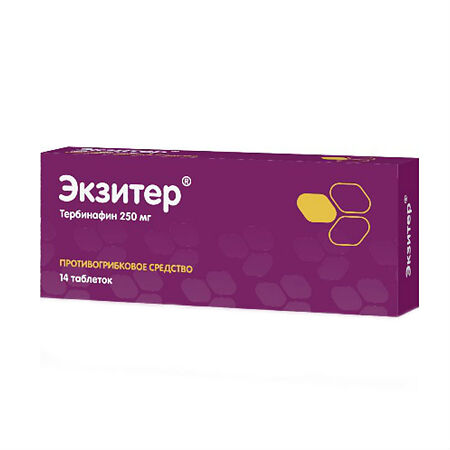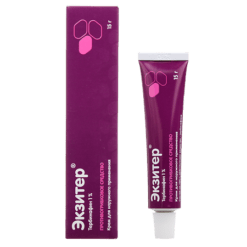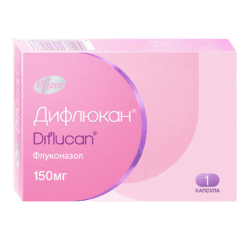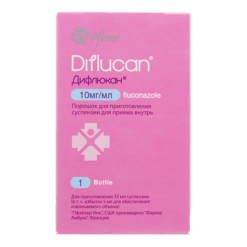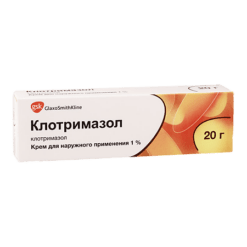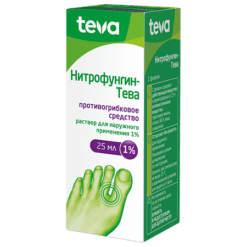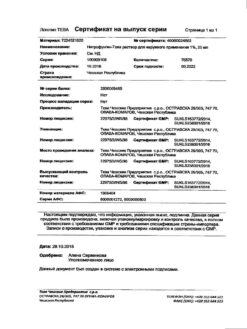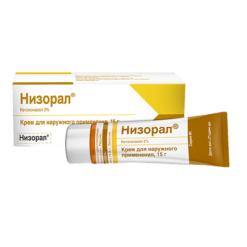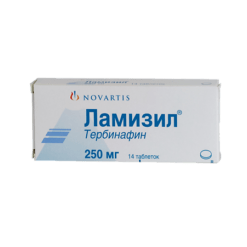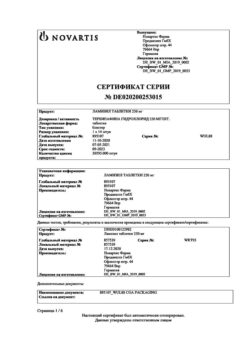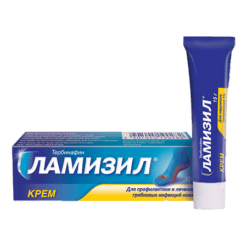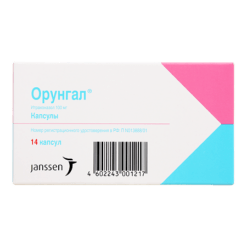No products in the cart.
Exiter, tablets 250 mg 14 pcs
€1.00
Out of stock
(E-mail when Stock is available)
Description
Terbinafine belongs to the group of allilamines and has a broad spectrum of antifungal action. In low concentrations it has fungicidal effect on dermatophytes Trychophyton spp. (T. rubrum, T. mentagrophytes, T. tonsurans, T.verrucosum, T.violaceum), Microsporum can is, Epidermophyton floccosum, yeast fungi, mainly Candida albicans. On Candida spp. fungi and their mycelial forms it has fungicidal or fungistatic effect depending on the fungus species.
Terbinafine disrupts the early stage of biosynthesis of the main component of the cell membrane of the fungus (ergosterol) by inhibiting the enzyme squalene epoxidase.
In oral administration it is not effective in the treatment of variegated herpes caused by Pityrosporum ovale, Pityrosporum orbiculare (Malassezia furfur).
Pharmacokinetics
In oral administration it is well absorbed over 70%; absolute bioavailability due to the “first pass” effect is reduced by 40%. After a single oral dose of 250 mg, time to maximum concentration (TCh) is about 2 hours; maximum concentration (TCh) is approximately 1 µg/ml. Area under curve “concentration – time” (AUC) is 4.5 mcg*h/ml, AUC increases by 20% when concomitantly taken with food. With prolonged use Stah increases by 25%, AUC – 2.5 times. Effective elimination half-life (T1/2) is about 36 h, terminal T1Y 200-400 h (indicates prolonged excretion from skin and adipose tissue). Equilibrium concentration (Css) is independent of age. Plasma concentration of terbinafine is independent of sex.
The binding to plasma proteins is more than 99%. It is rapidly distributed in the tissues, penetrates into the dermal layer of the skin and nail plates. It penetrates into the secretion of sebaceous glands and accumulates in high concentrations in hair follicles, hair, skin and subcutaneous tissue.
It is subjected to significant biotransformation, the resulting metabolites do not have antifungal activity. 70% is excreted by the kidneys. It does not accumulate in the body. The age of patients does not affect the pharmacokinetics of terbinafine, but elimination may be reduced with renal or hepatic lesions, leading to high concentrations of terbinafine in the blood. It is excreted with breast milk.
Indications
Indications
Active ingredient
Active ingredient
Composition
Composition
Active substance:
Terbinafine hydrochloride 281 mg, in terms of terbinafine 250 mg;
Auxiliary substances:
Microcrystalline cellulose,
Sodium starch glycolate,
Pregelatinized starch,
Magnesium stearate,
Silica colloidal anhydrous.
How to take, the dosage
How to take, the dosage
Orally in adults – 250 mg/day in 1 or 2 doses.
The duration of treatment depends on indications and severity of infection: in skin lesions – 2-4 weeks, in nail lesions – from 6 weeks to 4 months or more. For children with body weight over 40 kg – 250 mg/day, 20-40 kg – 125 mg/day, up to 20 kg – 62.5 mg/day.
Applied externally 1-2 times a day for 1-2 weeks.
Interaction
Interaction
Contraindications
Contraindications
Side effects
Side effects
Digestive system disorders: nausea, anorexia, moderate abdominal pain, diarrhea, impairment or loss of taste, cholestasis, jaundice, hepatitis.
Allergic reactions: skin rash; rarely – arthralgia, myalgia, erythema multiforme, Stevens-Johnson syndrome.
CNS disorders: headache.
Hematopoietic system disorders: neutropenia, thrombocytopenia.
Local reactions: hyperemia, itching, burning sensation.
Similarities
Similarities
Additional information
| Shelf life | 3 years |
|---|---|
| Conditions of storage | In a dry, light-protected place at a temperature not exceeding 25 °C |
| Manufacturer | Ozon, Russia |
| Medication form | pills |
| Brand | Ozon |
Other forms…
Related products
Buy Exiter, tablets 250 mg 14 pcs with delivery to USA, UK, Europe and over 120 other countries.

